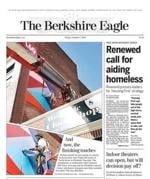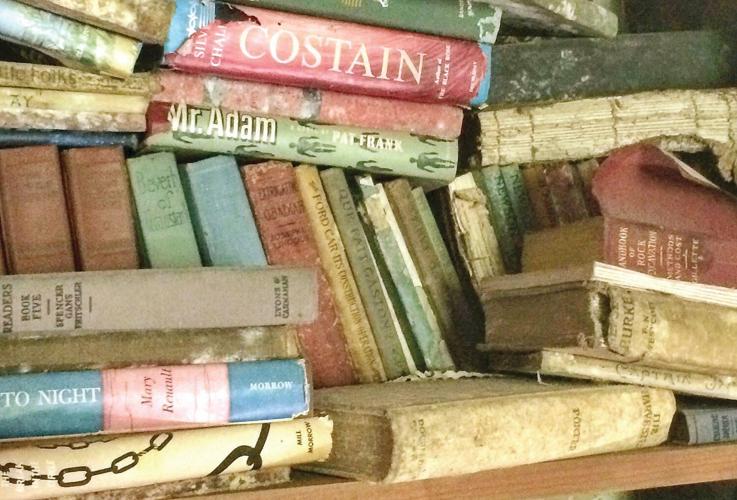WINDSOR — Curb appeal? Forget it.
The house at 800 Windsor Bush Road in Windsor can barely be seen from the street through the overgrowth. The wooden building is so derelict it takes a certain person to appreciate what remains, more than two centuries after settlers put it up.
Tristam W. Metcalfe III, for instance.
Metcalfe knows a parlor floor has fallen into the cellar, furniture and all. And he acknowledges that a back roof is succumbing to gravity.
But as an old hand at historic renovation, Metcalfe is a trained optimist — in part because he has seen historic preservation tax credits cover up to half of a project's cost.
After learning the town's oldest dwelling faced demolition, Metcalfe fired off a letter to assessors, pleading with them not to let the longtime Bird family home disappear in a training exercise for Windsor firefighters.
"Is there any way you can help me to stop the unconscionable burning down of important town history?" he asked.
That plea ended up before the Select Board, which has been giving Metcalfe time to win support from the property's owners and to gain control of the site.
"I've been in lots of buildings that are falling down and dangerous," Metcalfe said in an interview. "Everyone thinks it's a lost cause."
But he believes there is enough left to save of the home that three Cummington men — Samuel and John Dawes and Amos Ford — started building in 1785.
The trio finished the house in 1786 while living in a log cabin, according to a town history. Samuel Dawes became its first occupant.
That was the year of Shays' Rebellion and two years before Massachusetts ratified the U.S. Constitution. The house had seen four winters when George Washington became the new nation's first president.
More than 230 years on, descendants of the home's most recent owners do not appear to want it. Six people hold partial ownership rights.
As of this week, Metcalfe had obtained quitclaim deeds from two of them, in effect signing over their ownership interests to him. He needed four more. One owner is Margie Kierstead, whose brother, Jim, lived for a time at the house when it was occupied by his grandfather, Frederick, according to a town history.
In a letter to Metcalfe, Margie Kierstead, an academic from Ohio who now lives in Windsor, indicated that the project had her backing, but needed unanimous support from her relatives.
Clock ticking
Though Metcalfe hoped to have a renovation plan lined up by now, the Select Board is giving him elbow room. If his project advances, the town would be spared costs involved with the controlled burn.
And as Metcalfe notes, the property could contribute to the local tax base.
"He has some time, but it's running short," said Kim Tobin, chairwoman of the Select Board. "Right now it's not a safe environment and that's a primary concern. It's in an absolute state of disrepair."
A notice posted to the home's front door cites a Dec. 5, 2018, court order granting Windsor the authority to burn the property on or after May 1.
Early this year, the newsletter put out by Friends of Windsor included a short article about the fact that the Bird home faced demotion. "Road's End for a Very Old House," a headline said.
"But we shouldn't let it vanish unremarked," the story said. It ran with a 1922 photo of Bird family members, plus one showing the home's decline.
The town's oldest home might now be its most dangerous.
When neighbor Terrence Trapp peeked recently inside the long-vacant house, he felt a floor shudder. The old refrigerator standing in the kitchen tipped forward and back, ominously.
"It's kind of a disaster in there. We didn't get beyond the kitchen," Trapp said.
Talk of saving the house puzzles him.
"That's my question — save what? I don't see how it's anything but folly at this point," he said.
But Metcalfe thinks enough remains of the Bird house to see the project take off.
"The main house is pretty true and square," he said. A rear section that is caving in can be removed, he said, as a construction crew probes and trims back to the structure's core. Metcalfe has worked with a son, Walker, a builder experienced in historic renovation. Metcalfe would design the project.
"Basically you cut that out and you reframe it," Metcalfe said of parts of buildings that can't be preserved. "We don't know what we'll be saving inside."
To qualify for tax credits, the project would have to do all it can to recreate the original dwelling, described in state documents as a 1 1/2-story Georgian cape with a "center entry with five over lights (a reference to windows), cornices, cornerboards and returns."
The document offers no mention of two barns, which is just as well. They lie nearly level, in heaps of boards out back.
Metcalfe says he anticipates spending at least $200 per square foot on the renovations. If it all works out, he promised in a letter to town officials, Windsor will have "a treasured historic home back on the tax rolls enhancing the value of its neighborhood."
If Metcalfe succeeds, he would also save the town the cost of clearing hazardous materials from the property before the controlled burn.
A few miles away, that's the fate that will most likely befall a vacant property at 1936 Old Route 9.
When they gather for a special town meeting Sept. 9, Windsor residents will be asked to approve spending $15,000 to prepare to demolish vacant properties.
Some of that could eventually be recouped, since the town would place a lien on the property for its demolition expenses.
Tobin, the Select Board chairwoman, said the Old Route 9 property stands a chance of being purchased as a building lot.







